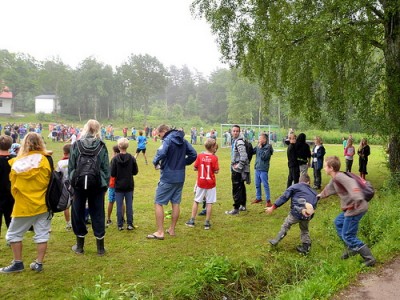The number of children living in poverty in Norway has increased sharply, with 78,200 people under the age of 18 now listed below the poverty line. The majority are from immigrant families, according to new figures from Statistics Norway (Statistisk Sentralbyrå, SSB).

After several years of relative stability, 2012 saw a jump in the number of poor children in Norway, reported Norwegian Broadcasting (NRK). In the space of a year the number of children in poverty increased by 4,300, from 73,900 in 2011 to 78,200 in 2012. Almost all of these children are from immigrant families: while only 11 percent of children in Norway have an immigrant background, they now account for half of the poor under the age of 18.
SSB researcher Mads Ivar Kirkeberg said that’s a considerable over representation. “It’s important to be clear that there are large differences between different nationalities, but what’s common between poor immigrant families is they often have many mouths to feed, and they often have low employment,” he said. “That creates greater challenges in efforts to integrate immigrant children since some are in danger of being shut out from for example different leisure activities, because the family hasn’t got enough income.”
The poverty line in Norway is measured as households having 60 percent or less of the median income. For a couple with two children the low income limit is NOK 392,000 (USD 64,800) a year, and for a single parent with two children it’s set at NOK 299,000 a year. When the total household income is below the poverty line for three years, a family is defined as poor.
Somali children poorest
SSB found 70 percent of all Somali children under 18 live in poverty, and 54.3 percent of Iraqi children, 49.3 percent of Afghan children, 44.4 percent of Eritrean children and 40.5 percent of Pakistani children are also below the line.
In Somali families where the main breadwinner has lived in Norway for three years, 90 percent of children live in poverty. After the main earner has spent 10 years in Norway, the number of children in poverty drops to 70 percent. In Eritrean families, the numbers are the same after the first three years, but after a decade of living in Norway the number of Eritrean children below the poverty line drops to 17 percent.
The leader of Norwegian research group Fafo, Tone Fløtten, said it’s worrying to see long-term poverty increasingly concentrated in certain groups. “This assists in shaping a more divided society, and we risk long-term problems with segregation.” A report in December found of all immigrant groups in Norway, Somalis struggle most with integration.
Conservative (Høyre) politician Arve Kambe who leads the Parliamentary labour and social committee told NRK it’s a sad development. He said the key to reducing immigrant poverty is to improve Norwegian language education and get more parents into work, and there’s a duty to stop young people from becoming dependent on long-term social welfare.
“It’s always a balancing act,” he said. “It is first and foremost a personal responsibility to get education and a job. At the same time, many of us need help at times in our lives. We must balance that and make sure it doesn’t become a welfare system that people get trapped in. We must have a system where it pays to work, and it doesn’t pay to be on security.”
Kambe said there also needs to be more Norwegian integration for children, including through recreational activities with Norwegian kids. “It means that many children and youths don’t get the opportunity to participate in the same arenas as others, for example in recreation, sports teams, or activities which require fees and equipment.”
newsinenglish.no/Emily Woodgate

